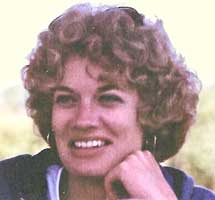An old idea is taking a new form in Waterbury and other major cities in Connecticut.
The idea was to recruit future teachers from the ranks of paraprofessionals working in the schools. This was the concept behind the Teaching Opportunities for Paraprofessionals (TOP) program, which Alma managed at the State Department of Education in the early 1990s.
TOP was an initiative to bring more persons of color into the teaching profession. The program enabled paraprofessionals to return to college and pursue bachelor’s degrees. Most paraprofessionals in our big cities were persons of color. Many had some college credits, and all were committed to careers in education.
The program succeeded in bringing greater diversity to the teaching profession in Connecticut. Unfortunately, however, the legislature terminated the program in the late 1990s because of the cost.
Therefore, I was delighted to learn the other day that the idea of grooming paraprofessionals as teachers is alive and well.
The CT Mirror reported that Jahana Hayes, 2016 National Teacher of the Year, appeared before the state board of education to endorse an initiative to increase diversity in the state’s teacher workforce.
Hayes, who works to recruit and prepare teachers for the Waterbury Public Schools, shared her experience with the Relay Graduate School of Education. The Relay teacher-preparation program has been enabling school employees from Waterbury and other major cities — primarily paraprofessionals — to earn their teaching certification.

Hayes is working with Relay because she believes in recruiting future teachers from among current employees of the school system. This replicates the concept behind the TOP program from over two decades ago.
Creative efforts are needed to promote greater diversity in teaching because the vast majority of students in the state’s teacher-preparation programs are white. In fact, 82 percent in the 2016-2017 school year were white, according to the State Department of Education.
Now, persons of color account for fewer than 9 percent of educators in Connecticut’s public schools. Meanwhile, over 40 percent of public school students are minorities.
Over the past three years, 14 employees of the Waterbury Public Schools have enrolled in Relay teacher-preparation programs — all persons of color. Now, 13 percent of the district’s staff are persons of color.
The state board of education approved Relay’s non-traditional teacher-preparation program in 2016 over the objections of college faculties and teachers’ unions, who objected to Relay as a “shortcut to certification.”
The Connecticut Education Association, the state’s largest teachers’ union, has endorsed Hayes in her campaign to represent Connecticut’s Fifth District in Congress. But she has parted ways with the union on this issue, maintaining that the Relay program has had a positive impact in Waterbury.
The TOP program supported paraprofessionals in traditional teacher-preparation programs in colleges and universities across Connecticut. But all these years later, with persons of color accounting for a small percentage of Connecticut public school educators, perhaps alternative approaches are justified.
- Woody Exley
